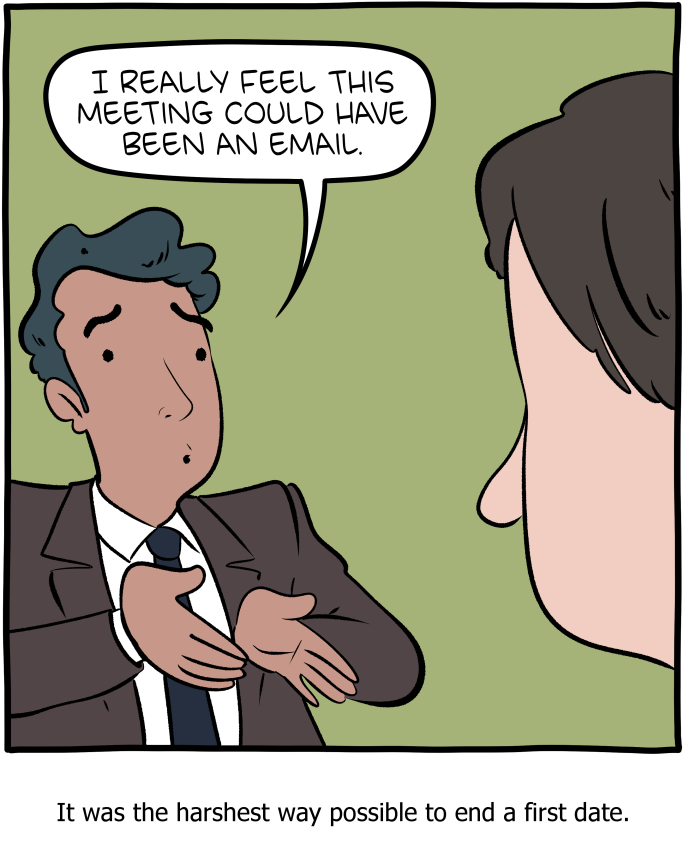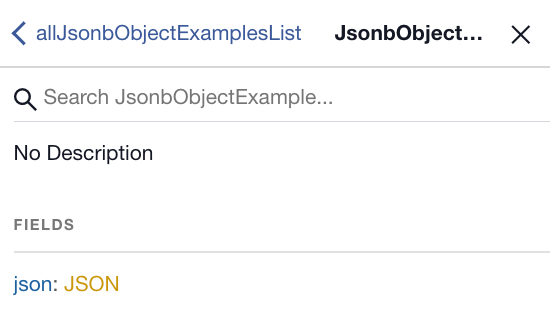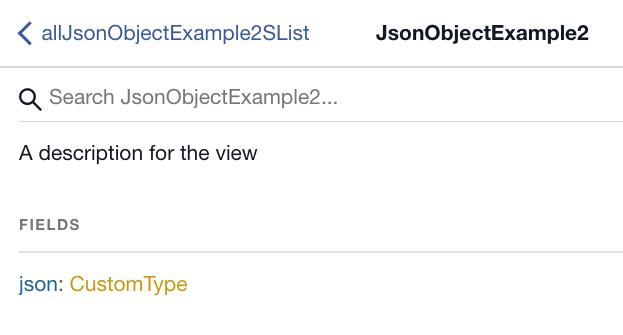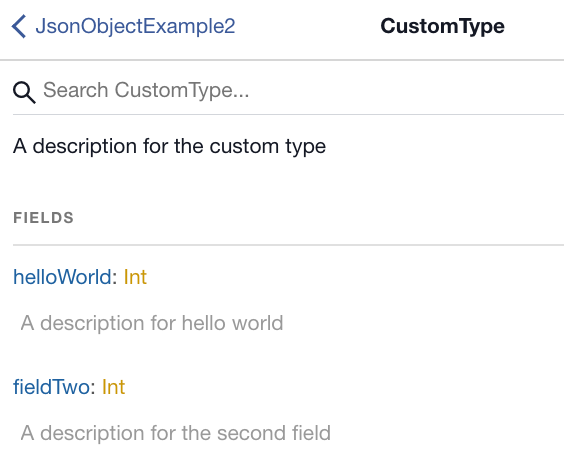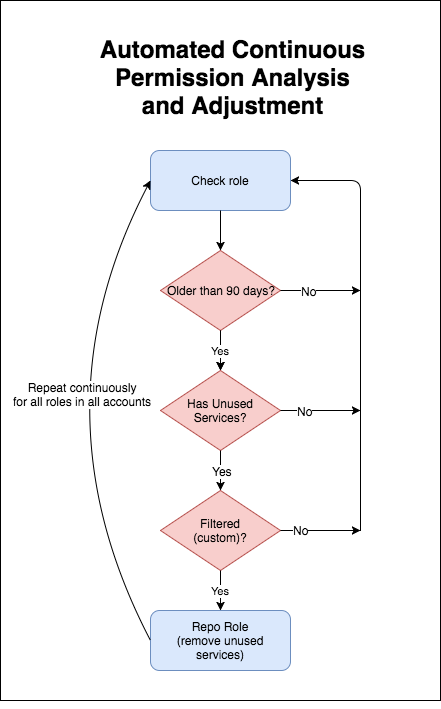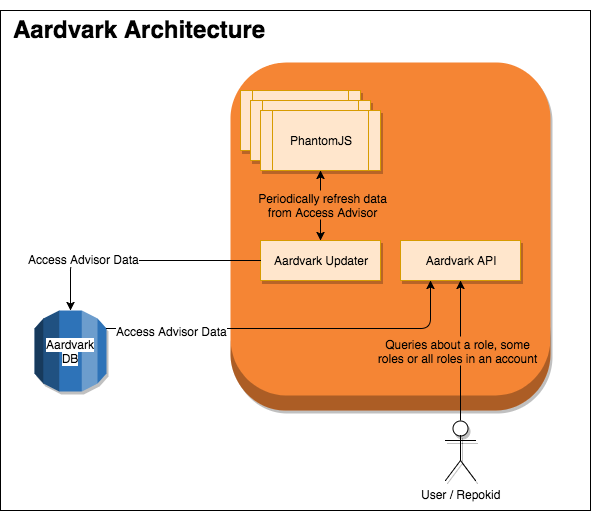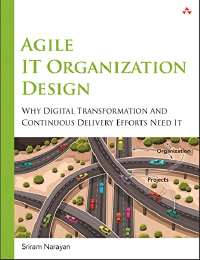There’s not really any normal way to start a relationship. Some people go on a date, and then another date, and then another, and one day it’s just clear to both of them that they’re in a relationship. Some people start seeing each other, but they keep things black and white until a “So are we doing this?” conversation makes it official. Sometimes a platonic friendship forms first and tension builds under the surface until an unexpected kiss lights the friendship on fire.
But there’s usually some first time that this happens:
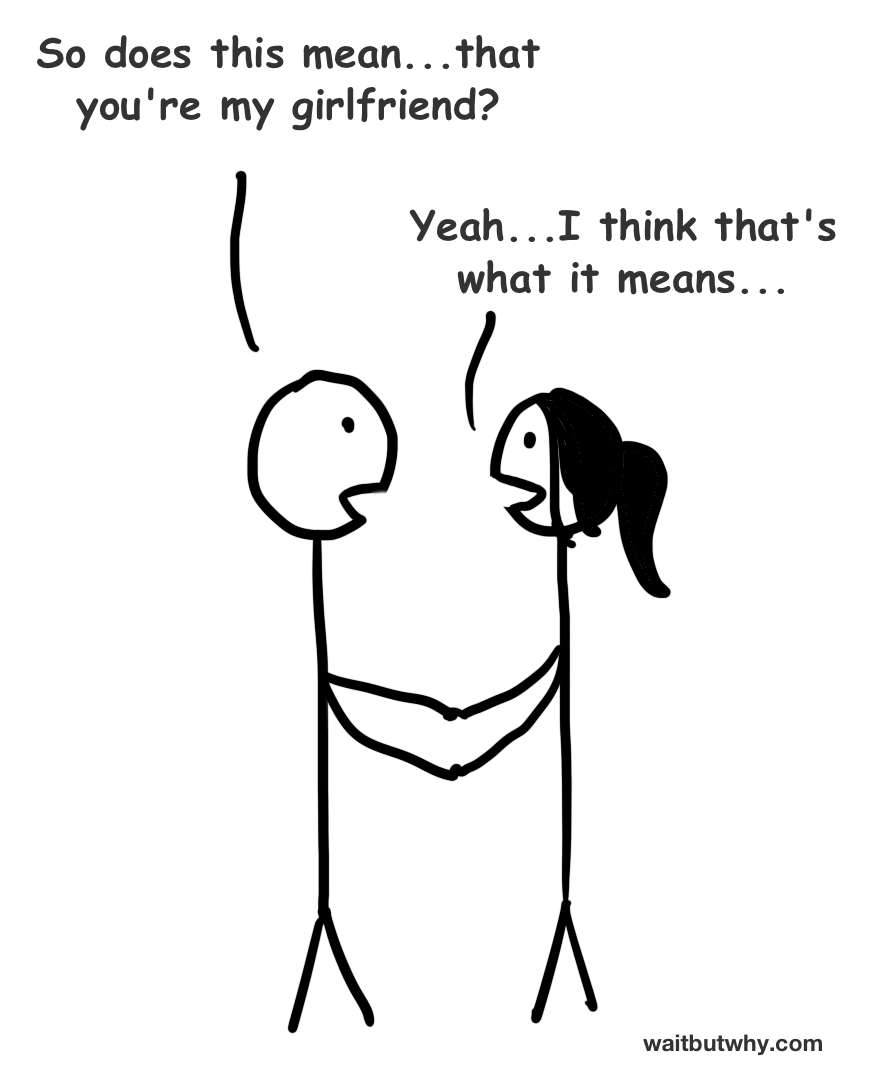
And suddenly, you’re here:

Your new relationship is with you all the time, even when you’re not together.
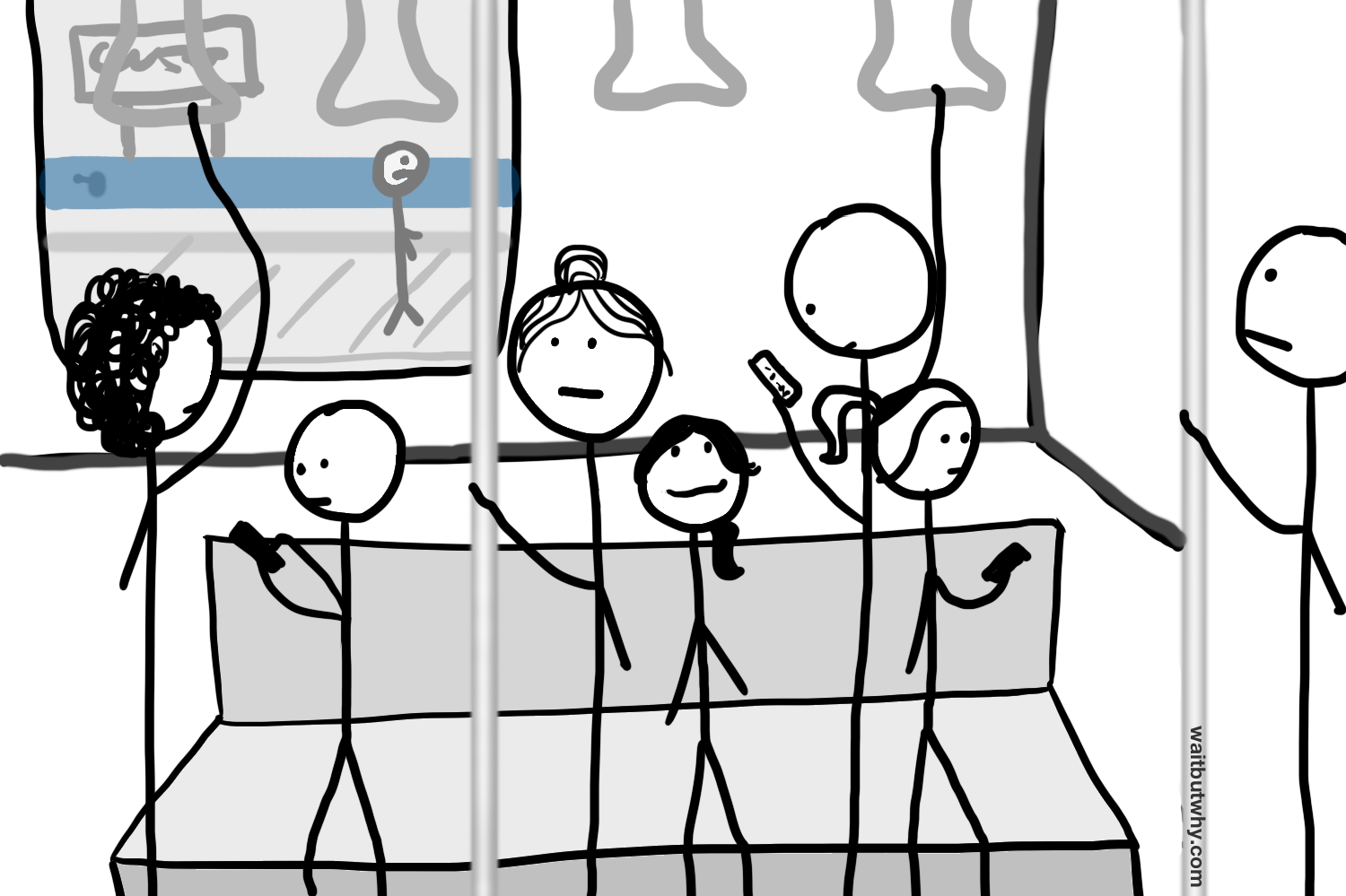
You’ve left the rest of shitty humanity behind, and it feels great. Then this happens:
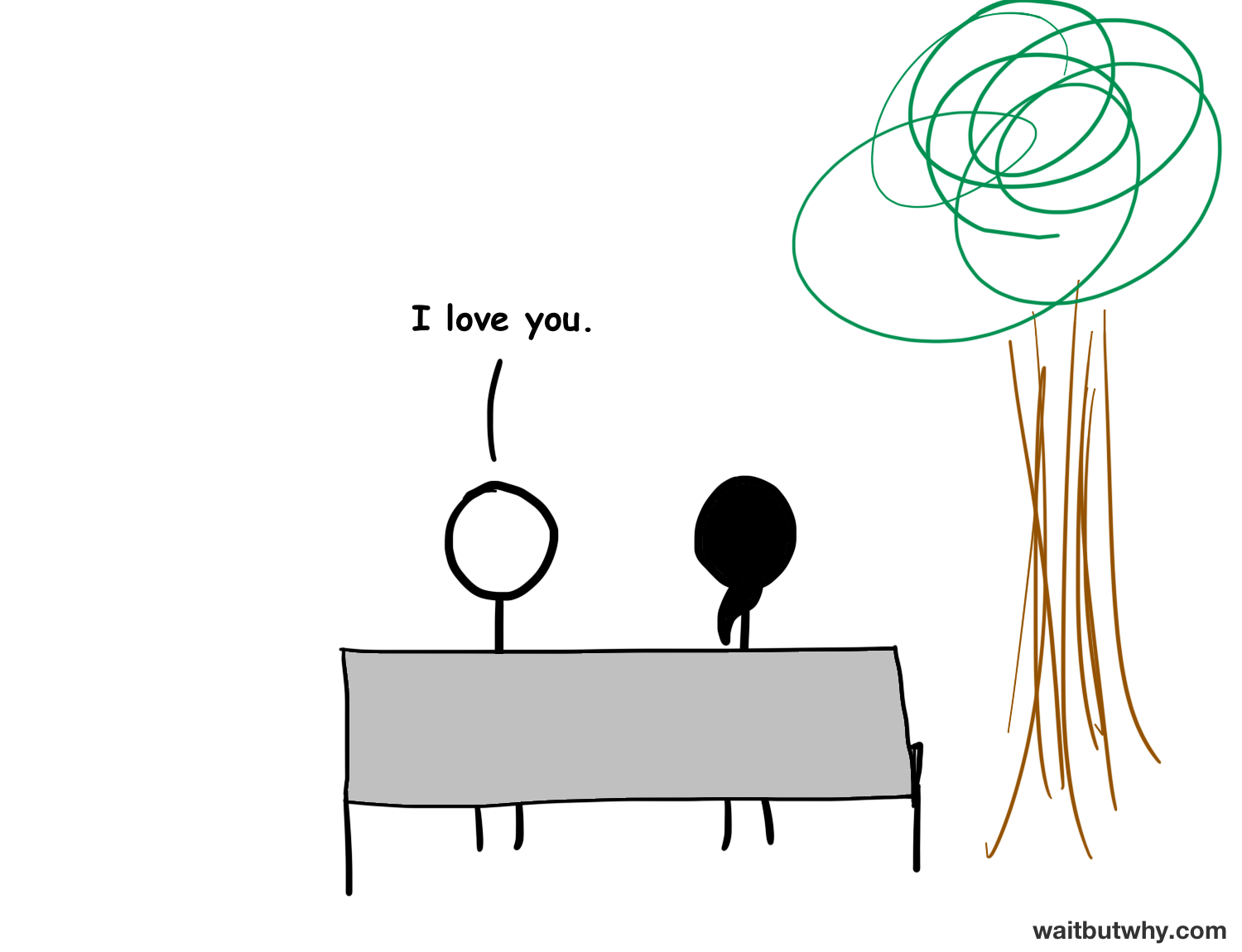

And all the song lyrics make sense.
It goes on like this for a while, but as the months pass, you notice things changing. The unicorns turn into horses and then bikes and then one day, you’re not riding anything at all. The perfect person you found starts to say and do imperfect things. Some of those funny quirks you adored early on seem to be striking you as more annoying than funny. And it starts to dawn on you that you might be dating a fucking dick.

Sometimes things go further south, as butterflies and rainbows turn into frustration and disillusionment, and the relationship that used to lift you up seems to now be boxing you in.

All of the negative qualities you couldn’t see in the fog of love are suddenly right in your face, like a weight that’s dragging you down.

A lot of relationships end right about here.
But maybe, having seen the dark side of your partner, you step back and take a long look at both the good and bad together. You put away both the rose-colored glasses and the shit-colored glasses and see who you’re really dating: a three-dimensional, one-of-a-kind, beautiful, piece-of-shit human being.
Who’s the best.

And the worst.

And your teammate.

And your rock.

And you decide you like what you’ve got.
And your lives go on together.

But just when things get simple, something else starts to happen:



Society, in most parts of the world, doesn’t like when a relationship lasts too long. To society, a relationship is simply a testing ground—an incubator that prepares you for The Decision. And if too many years go by in a relationship without The Decision being made, society decides that something must be wrong. To help right the wrong, society will begin to apply pressure on the couple, from all angles.
Some people are bigger than society. Most of us are not. For most of us, society’s rules are our rules, and as you and your person walk down your blue balance beam, you can feel the walking space melt away around you. It’s time to make The Decision.
Your relationship needs to be converted into Everything Forever or Nothing Ever Again. Soon.
The typical human isn’t really equipped to make The Decision. We evolved to live short lives, during which life-altering 60-year commitments weren’t a thing. We evolved in small communities without nearly as many available options. And most of us, when presented with The Decision, have relatively little relationship experience and an incomplete understanding of our own adult selves—selves that in many cases only recently started existing.
But society doesn’t care. So you decide.
Humans have come up with four main methods to make The Decision:
Method 1) Let the other person decide
The easiest way to handle The Decision is to just not really handle it. You take a passive approach, as if you’re on a raft, going down a river, and you have no control over where the current leads you—you’re in the hands of momentum and inertia. Once you hit your mid-20s, you just wait until you get into your next relationship and then marry whoever that person happens to be, whenever/if-ever that person decides it’s time, regardless of how right or wrong the relationship is for you.
Method 2) Let your primal forces battle it out
For people determined to more actively make The Decision, the next easiest way to go is to let your emotions and primal forces figure it out. Making The Decision provides a reminder that “you” is actually a collection of voices, each weighing in from different parts of evolutionary history. Each voice has its role in the homeostasis of our normal lives, but when it’s time for something as rare and important as The Decision, there’s suddenly a brawl in your head for influence—and no one brawls harder than your primal forces. Some of the major players:
Love
Deep down, most people are sympathetic characters. And when you’re in a relationship for enough time, you’ll usually end up loving the person—even if you don’t like them. You know their whole story, which makes you care about them and the fact that they rely on you makes you feel a tremendous loyalty to them. This is the kind of love you feel for your family and closest friends, and it can exist in full force even after the feeling of being “in love” has faded. And for many people, this deep emotional connection makes it basically inconceivable to ever break up with their partner. This is a beautiful way to make The Decision when you’re in a strong, healthy relationship, and a tragedy when you’re not.
Fear
Humans specialize in making critical life decisions based on fear, and when it comes to The Decision, there’s a lot to be afraid of.
When a fearful person takes a look to the left side of the balance beam, they might see all kinds of things:
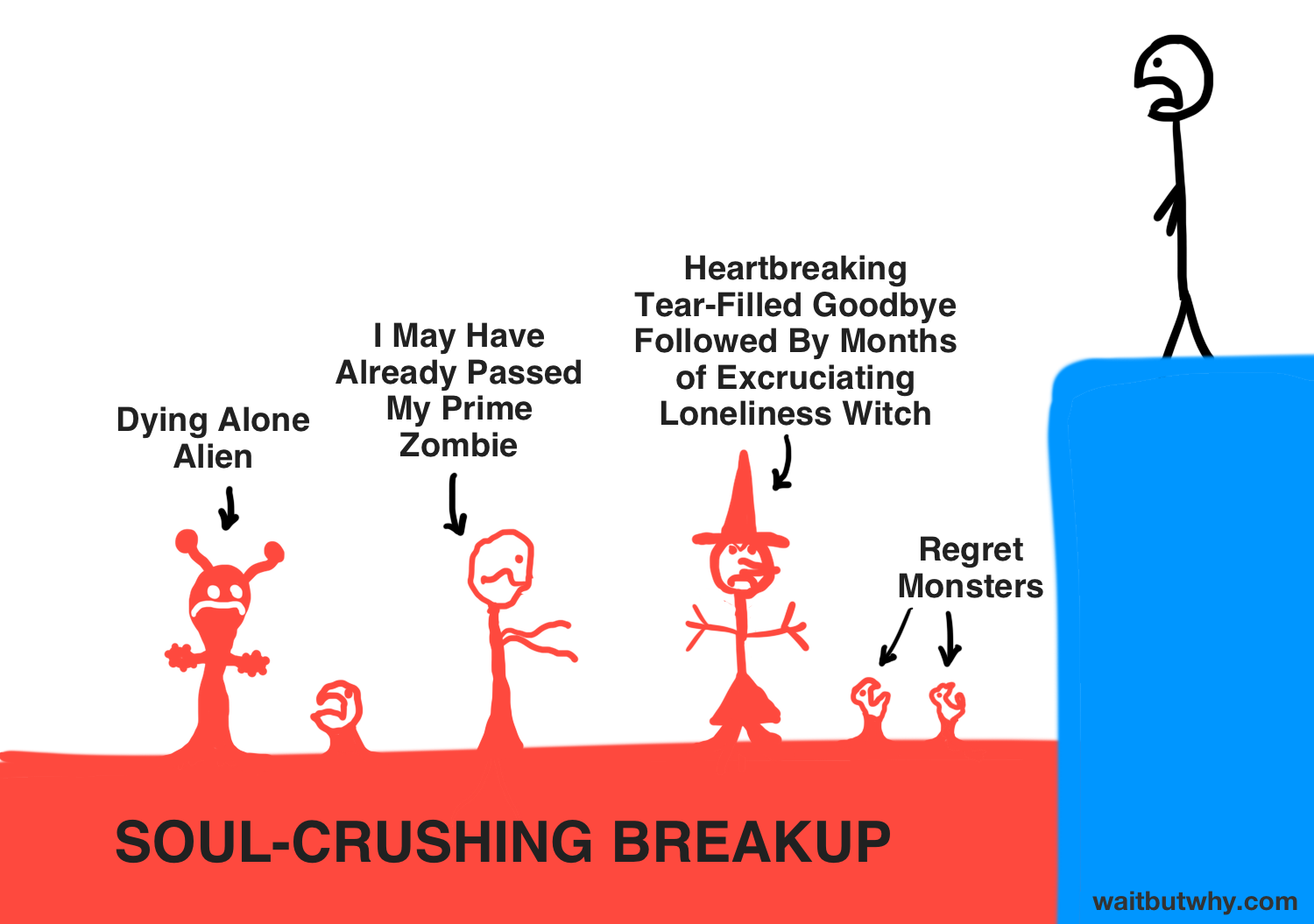
The right side of the beam isn’t much better.
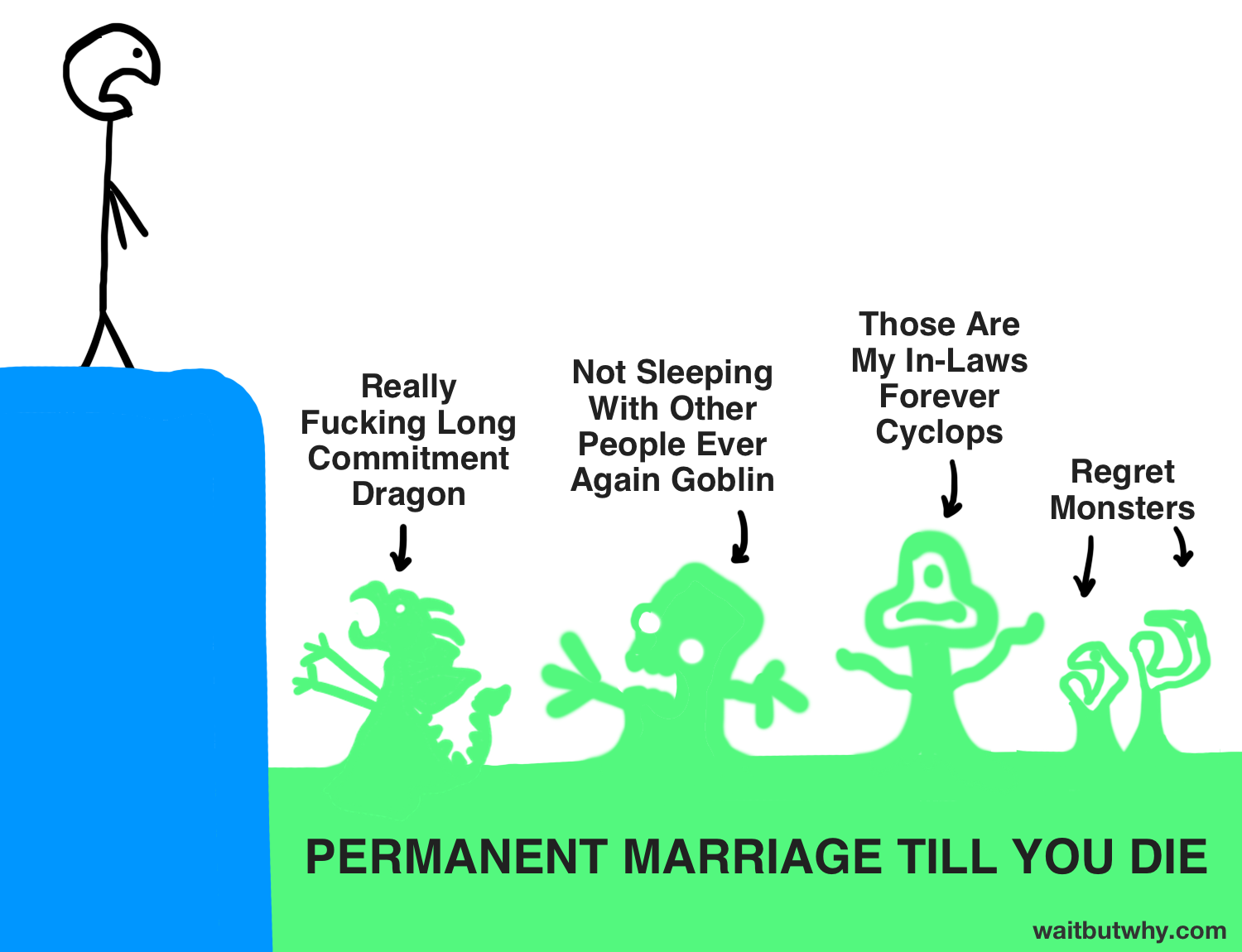
Different people feel these fears at different levels of intensity, and for someone whose fear tends to run their life, it’s usually pretty simple: the particular fear that grabs them hardest by the collar ends up making The Decision.
Ego
Your ego, meanwhile, is busy staring down at a clipboard. Depending on what your ego values, that clipboard might display a checklist describing your ideal partner—their appearance, age, family background, intelligence, job, wealth, general personality type, etc. Or maybe the clipboard has a story written on it, one that was written long ago about how your life should go. Your ego will examine your current situation and see how it measures up to what’s written on the clipboard, and it’ll base The Decision on its findings.
While all of this analysis is going on, your ego sometimes also finds itself getting very hungry—for admiration, attention, and conquest. If this hunger gets too intense, it can overwhelm an ego to the point where it may sway its vote, no matter what the clipboard says.
Sex Drive
Your sex drive is not a complicated character. If it has a grilled cheese sandwich every day for lunch and then one day, you ask it if it would like to try the buffet, it’s going to say yes. Unless, of course, the grilled cheese is super fucking incredible.
So these four primal forces, along with a few others, all voice their opinion at the same time. In some people, all of the voices are in agreement about the verdict. In others, the voices disagree, but one of the voices is so loud that it drowns out the others. In both of those cases, The Decision is pretty easy.
But what happens when your primal forces provide no clear answer?
Method 3) Turn to your gut
For some reason, we have wise stomachs, and when The Decision isn’t obvious, sometimes asking your gut can do the trick.
Your gut relies on your intuition and asks one simple question:

And what makes your gut your gut is that when it answers that question, it doesn’t deliberate—it just knows the answer: a simple yes or a simple no. The gut doesn’t deal with nuance, which makes it a good match for something big and binary, like The Decision.
And for a lot of people, this works.
But there are some people who won’t end up being passive Deciders, or emotional Deciders, or gut Deciders—who won’t turn to any primal or instinctual voice when it comes to this particular decision. They’ll get to the bottom of this in spite of those voices—based on experience and evidence and data and facts. They won’t be instinct-driven or fear-driven or ego-driven or sex-driven—they’ll be guided by rationality.
The brain Deciders.
And when it comes time for them to make The Decision, they’re in big trouble.
Method 4) Figure it out in your brain
The prefrontal cortex is kind of like the brain’s brain. It’s the part of you that sorts through information and makes plans and predictions and weighs evidence. It’s great at using what it learns to draw conclusions about how to act or what to do—as long as it knows the rules of the game and has access to the right information. And when it’s time for The Decision, your brain will do what it always does when confronted by a fork in the road—it’ll attempt to think and assess and analyze its way to the optimal rational answer.
Something as important and permanent as The Decision requires conviction, and conviction requires a source. No source of conviction, no Decision.
The source of the heart’s conviction is its love and care for the other person. The source of the ego’s conviction is its belief in its clipboard. Fear and sex drive derive their conviction from the obvious—fear and sex. The source of the gut’s conviction is an instinctive feeling that emerges from experience. And an inertia-y person gets their conviction from the conviction of someone else. Those sources are what allow people to make The Decision with relative ease.
The brain hears these voices, but it discredits their conviction in each case because the certainty emerges from what the brain sees as an irrational place. For the brain, the only respectable source of conviction is sound evidence.
And good luck with that.
If you’re typically a brain person, when it comes to The Decision, you want to try to not be you. Because the brain, for all its merits, does not do well in this situation, where the outcome is critical and evidence is hard to come by. Let’s look at how it might go:
Maybe you start by looking over to the marriage side of the balance beam—where you see a house.

That’s the house of the life you’re about to sign up for. You really enjoy your relationship, so you’re excited about what might be inside that house. But the house is also mysterious, because you don’t really know what either you or your partner will be like as a spouse or how either of you will grow or change in the future. Not much concrete evidence there.
So you turn and look over at the breakup side of the beam. You see a path, and a couple walking down it.

That road is whatever life you’d end up living if you were to move on from your relationship, and that’s the marriage you’d end up in. The marriage that might have been.
What kind of marriage would that be, and what adventures lie down that road? Maybe your life on that road would be much happier than whatever’s in that house on the other side, and maybe your current partner would end up happier somewhere else too. Or maybe you’d look back and realize that you made the biggest mistake of your life. Without knowing anything about that other path, there’s no way to compare it to the house on the other side. Again, no real evidence.
So you take a closer look at the one thing you have actual information about: your current relationship.
You decide to make a big chart where you list all the things you like and don’t like about your relationship—a relationship-assessment chart. You end up here:
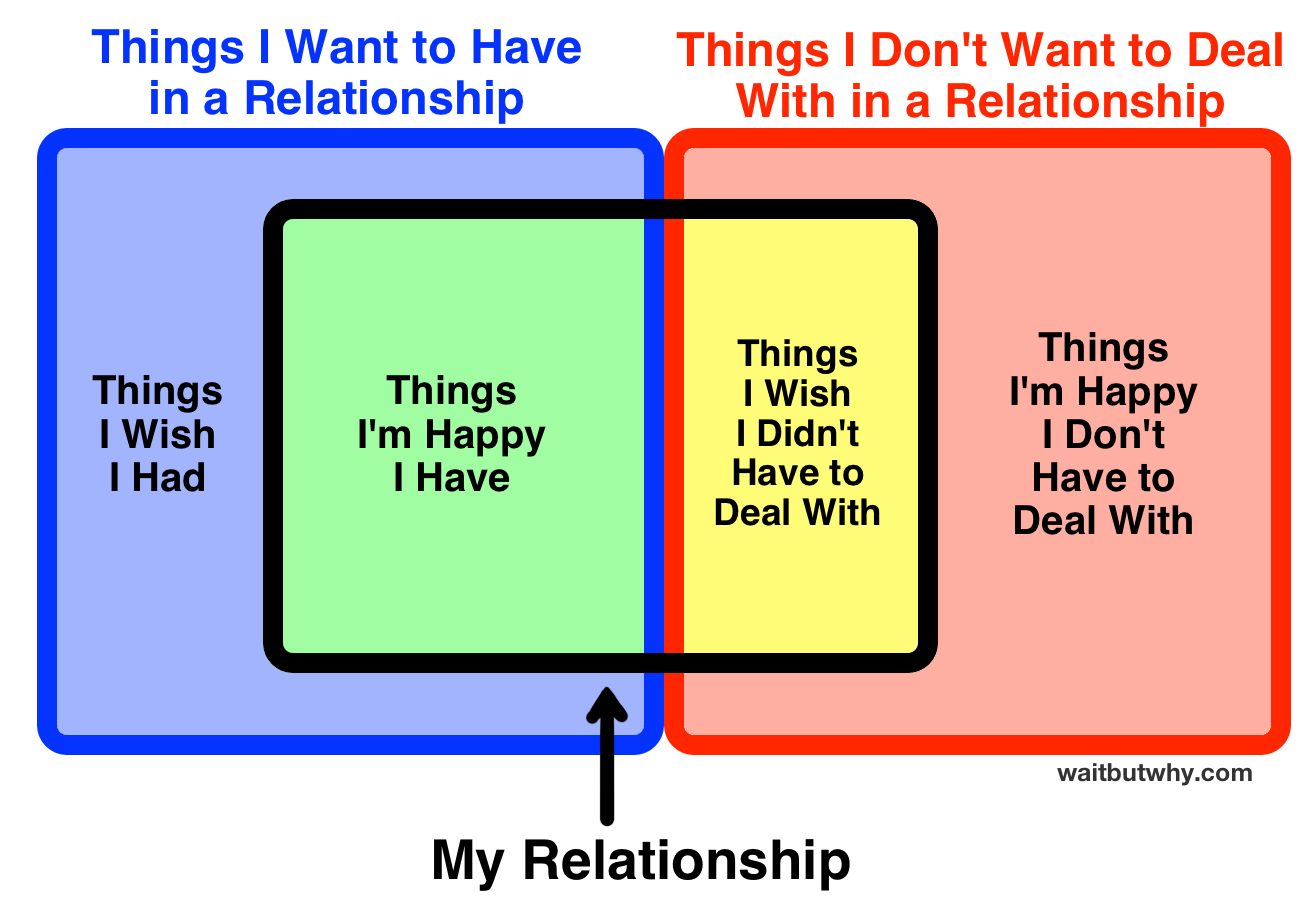
Fucking great—now what? All relationships—the good ones and the bad ones—have a chart that looks like that, with things in all four of those zones: blue, green, yellow, and red. And without much relationship experience or marriage expertise, you have no good way to evaluate whether your particular diagram looks as promising as you hope it does or whether there are red flags in it that you’re not seeing that will lead to major issues later. You try comparing your relationship to those that your friends are in—but it’s hard to know what really goes on in other relationships, and each one is so complicated and unique anyway that it’s mostly apples and oranges.
Without any way to construct an airtight argument in either direction, you’re left feeling very little conviction about the situation. Because the stakes are so high, you become paranoid about making the wrong choice, and every time you think you might have an answer, you second-guess yourself.
The whole thing quickly becomes a mindfuck. You try talking yourself into feeling good about marriage by reminding yourself that every relationship has flaws and that marriage is all about acceptance—but then you realize that that’s also exactly how someone sounds when they’re talking themselves into settling for the wrong person. In both of those cases, the green and red zones of the diagram provide more than enough material to construct a full “why this is a great decision” argument. Likewise, if you wanted to play devil’s advocate and look at the reasons this might not be the right marriage for you, the blue and yellow sections of the diagram would make it easy—whether breaking up is a wise move or a foolish one.
And because the diagram and its four zones allow you to so effortlessly construct whatever convincing narrative you want to about your relationship and The Decision, you worry that anything that feels like conviction is just you falling for a narrative created by fear or ego or some other deep-down motivation.
Unable to come to a trustworthy conclusion, the brain person becomes a Paralyzed Pre-Marriage Relationship Person. A PPMRP has three options:
1) Procrastinate. Until you die, until your partner dies, or until your partner breaks up with you.
2) Turn back around and succumb to one of the primal forces. Maybe if you wait for a while, your fear of being single at 36 will overpower your dedication to rationality?
3) Come up with a decision-making litmus test that actually works.
Assuming you don’t find the first two options ideal, let’s talk about litmus tests.
The “actually works” part of option 3 is important, because people often come up with decision-making litmus tests that don’t actually tell you anything. For example:
An overly-broad, one-size-fits-all litmus test is a bad litmus test.
Like, “If I’m still toiling over this three years in, that’s probably a sign this isn’t the right thing for me.” Or, “I’m sure if we’ve been together this long, there’s a good reason for that.” Or, “If I still have the desire to sleep with other people, it must mean my heart’s not in this.”
Litmus tests like those suggest that everyone who toils over the marriage decision should break up or that every couple who’s together for a long time should get married or that no one in a great relationship still wants to sleep with other people. Different people do things like toil or stay together or feel promiscuous—or 100 other things—for totally different reasons, so broad statements like those don’t help with anything.
A litmus test that always yields the answer “We should get married” is a bad litmus test.
Like, “When I picture them standing on the altar with someone else, it’s a horrible thought—that must mean it’s the right move to marry them.” Or, “When we broke up for three days last month, I missed them unbearably—and it told me all I need to know.” Or, “I care about them more than anything and really want the best for them—that’s how I know I want to be with them.”
All these litmus tests tell you is that you A) feel possessive, B) feel attached, and C) love the person. In most long relationships—good and bad—the people in them feel all three of these things. The only real information you learn with tests like these is that you are, in fact, in a relationship.
A litmus test that always yields the answer “We should break up” is a bad litmus test.
Any version of the question, “Is this person a great match for me in every important way?” or “Is this person the best person for me?”
No, the person isn’t a great match for you in every important way. That has never happened before in our species. Likewise, there are at least a few hundred million people in the world that match your sexual preference. Only one of them is the best possible person for you. The chances that you were ever in the same square mile as that person are tiny, and the chances that you’re currently dating them are you’re not currently dating them. Litmus tests like these either require you to have a delusional view of your partner or the world, or they’re pretty much guaranteed to yield the conclusion that you need to break up and continue your quest for The One.
People struggling with The Decision crave guidance, and while statements like all of these can feel like a rescue line out of the PPMRP quagmire in the form of some larger wisdom, they don’t actually tell you anything about what you should do.
A good system for tortured brain people
I’m not an expert on this, nor am I married—but I’ve read a lot about it, and I’ve had a front row seat for a large handful of case studies, watching friends go through The Decision and talking to them about it while it was happening. And I think if we just use common sense, we can probably figure out what a hopeless brain person can do in this situation—so let’s give it a try.
To me, a good system might be as simple as these two steps:
Step 1) Find out where your gut is leaning, using thought experiments.
The gut is a real thing. And for our purposes here, your gut is the little kid in you who just wants one outcome more than the other.
The problem for brain people is that they’re by definition not gut people. The gut draws its wisdom from a mysterious place the prefrontal cortex does not understand, which makes brain people suspicious of the gut’s conclusions.
And suspicion is fine here, since your gut’s wisdom is limited by your experience and guts are often proven wrong with time—but the gut’s opinion is still important information.
Gut people have good practice at communicating with their gut about important decisions. Brain people do not—and the usual gut question—”does this feel right?”—won’t work. So we need to use thought experiments to isolate the gut’s voice amongst the cacophony in your head. Exercises like these are best designed by you, for you, since only you know you. But here are some ideas:
One kind of thought experiment creates a simulation in your head, which acts like a fishing fly, and our goal is to try to get the gut to be fooled by the simulation for a moment and jump at the bait, revealing what it really wants.
Something like: “Imagine you were being arranged married by the town matchmaker and she handed you an envelope with your to-be spouse’s name written inside. You open the envelope and it’s the name of your current partner.” This image might just make your gut jump up for a second and say, “Phew!” Or maybe instead, it would deflate just a little, just for a moment. If either happens, that’s good information.
Another type of thought experiment tries to get at the general yes or no feeling the question “does this feel right?” is supposed to reveal, but with some real on-the-nose imagery.
Like: “Picture two gravestones next to each other—yours and your partners. Does that feel right?”
Some of the most telling thought experiments help hear what the gut’s saying by trying to remove the often deafening voice of fear from the question and seeing if that changes anything.
For example, to test whether a resistance to breaking up is just a dread of the actual breakup itself, you could ask: “If there were a big green button in front of me that, if pressed, would make me fully single, where everything has been worked out with getting our things from each other’s apartments, where everyone in my life already knows, and where I’m totally emotionally recovered and moving on—in fact, I have a date tonight—would I press the button?”
Or if the real fear is of being single for years and years and never finding a new relationship, the button could do all of those things but also include “and I’m immersed in a new relationship.”
A fear of eternal commitment could be sussed out with a question like, “What if The Decision weren’t between breaking up and marriage, but only between breaking up and committing to the relationship for the next five years?”
If thought exercises like these leave you with the feeling that your inner inner self is “pulling” for the relationship, that’s promising.
But it’s not enough.
Step 2) Figure out what your deal-breakers are.
Let’s bring back our relationship assessment chart:

As we established earlier, this chart doesn’t provide much insight into how The Decision should go, because almost every relationship—the good and the bad, the healthy and the harmful, those built to last and those doomed to fail—has a chart like this, where it checks some of the right boxes and some of the wrong boxes, and also misses some of each. And yet, certain charts map out happy couples and others do not. So what’s the difference?
Deal-breakers.
Even though these charts show that there are many, many things we want from a relationship, our ability to be happy only depends on a small percentage of them.
Our relationship chart is like a happiness puzzle, and the items in the green and yellow zones are the pieces. The right question to ask about the chart isn’t, “Is this perfect for me?” or, “Will I automatically be happy if this is my chart?” The right question is, “How can I work with these pieces to figure out how to make myself and my partner happy?” If you’re a good puzzler, with some work and compromise—i.e. some adultness—you’ll probably be able to figure it out.
Unless the chart is missing one of your deal-breakers.
Your deal-breakers are the things that, if not part of your relationship, will guarantee your unhappiness. They’re things that no amount of hard work or compromise or maturity can fix. Your must-haves—and your must-not-haves.
A deal-breaker usually comes in the format:
There’s no way I can figure out how to be happy with someone who is / isn’t ____.
There’s no way I can figure out how to be happy with someone who does / doesn’t ____.
There’s no way I can figure out how to be happy with someone who values / doesn’t value ____.
There’s no way I can figure out how to be happy with someone who treats me / doesn’t treat me ____.
There’s no way I can figure out how to be happy with someone who believes / doesn’t believe ____.
Or maybe:
Out of principle, I will only be with / will not be with someone who ____.
Most real deal-breakers will be broad—e.g. “I may be able to fall in love with a negative person, but I could never be happy with that person.” Or, “I will never be with someone who makes my self-esteem lower.” Or, “I could never be happy with someone who isn’t intellectually curious.” Or something clean-cut like, “I could never be happy with someone who refused to have children.”
Deal-breakers that are more specific in nature can in some cases make sense—maybe you love dogs so much that it would truly impede you from being a happy person if you ended up with someone who didn’t want to own a dog—but they should be rare.
The key with all of these is that there are very few. These aren’t wants—these are needs. Your wants are important, but remember, the only people even eligible for the deal-breaker test are those who have already passed the gut test—plenty of your wants have already been taken care of in step 1 of our system.
Knowing your deal-breakers can help you know the right relationship when you see it, but it can also go a long way for anyone already in a relationship, because it lends insight into one of the trickiest aspects of a relationship: compromise. A great way to be unhappy is to refuse to compromise on things you wish were true about your relationship that aren’t. But another great way to be unhappy is to be too willing to compromise on your deal-breakers. That’s why this is so important—deal-breakers not only help Deciders and single people figure out what should be unacceptable in a relationship, they also remind already-Decided people that most of the problems in their relationship are probably non-deal-breakers that it’s okay to chill out about. Because so many relationship problems boil down to one or both members treating non-deal-breakers like deal-breakers—or vice versa.
And that’s really it. This gut check / deal-breakers system suggests that the mindfuck of The Decision is actually pretty simple—if a relationship successfully makes it through both steps 1 and 2, get married. If it doesn’t, don’t.
At least that’s what the system says.
But who knows. Relationships are impossibly complicated. And making a black-and-white binary decision about something that’s anything but black-and-white is kind of an insane thing to do.
And of course, even if it’s the right system, it’s not actually easy because assessing step 1 and step 2 isn’t easy. Getting a reading from your gut that you can trust is no small task for someone who typically lives in their brain—and figuring out what your deal-breakers are requires a serious deep-dive into your soul.
But for now, at least it’s a system—and a system you can hang on to. Which is just what some of us need.

___________
If you’re into Wait But Why, sign up for the Wait But Why email list and we’ll send you the new posts right when they come out. It’s a very unannoying list, don’t worry.
If you’d like to support Wait But Why, here’s our Patreon.
___________
If you liked this:
Another Wait But Why deep dive into the quandaries of figuring out who to marry: How to Pick a Life Partner
Some further issues, over in the world of single men: 10 Types of 30-Year-Old Single Guys
Once you finally make The Decision, you go straight into another Decision: How to Name a Baby
The post The Marriage Decision: Everything Forever or Nothing Ever Again appeared first on Wait But Why.




